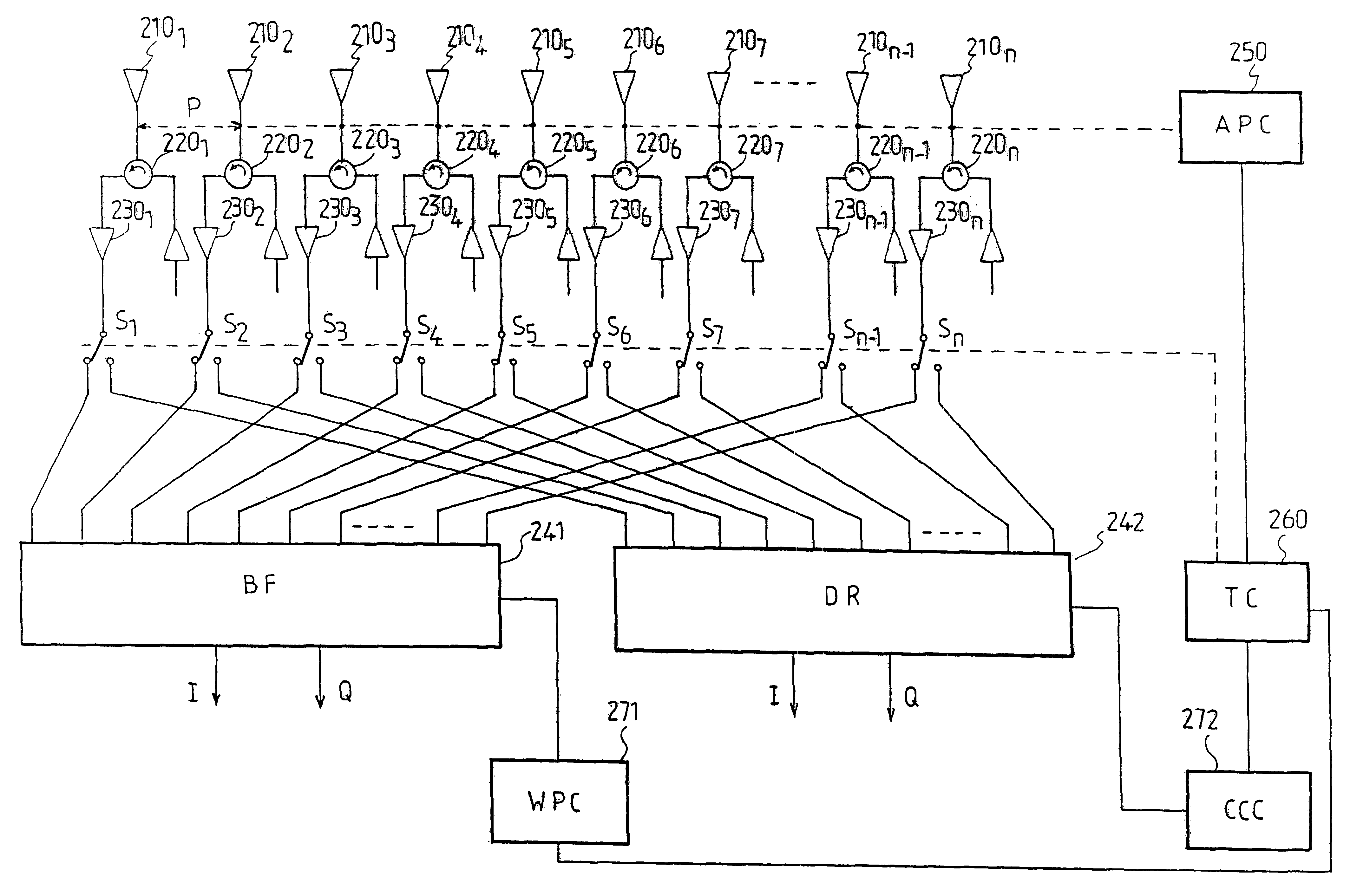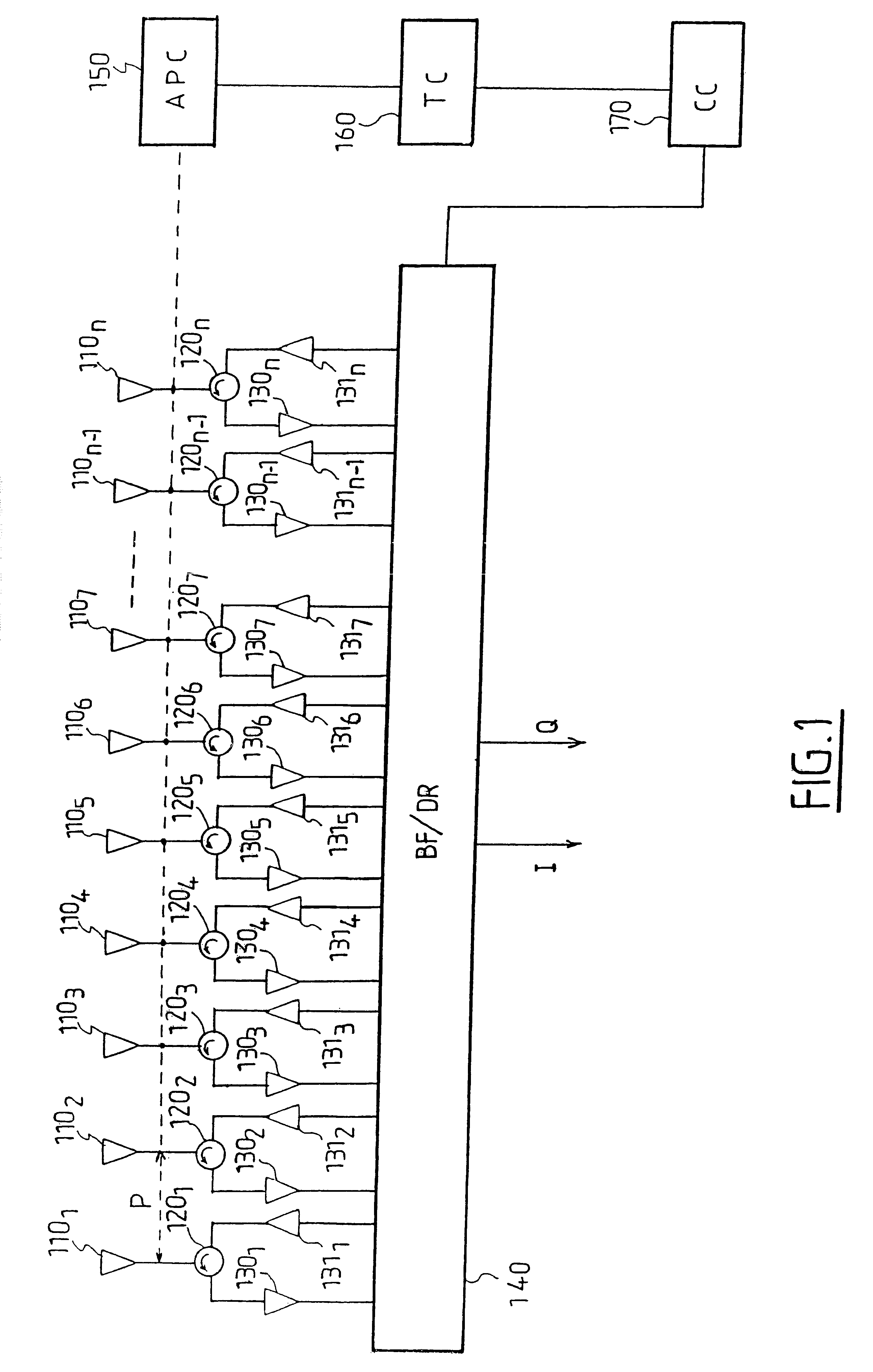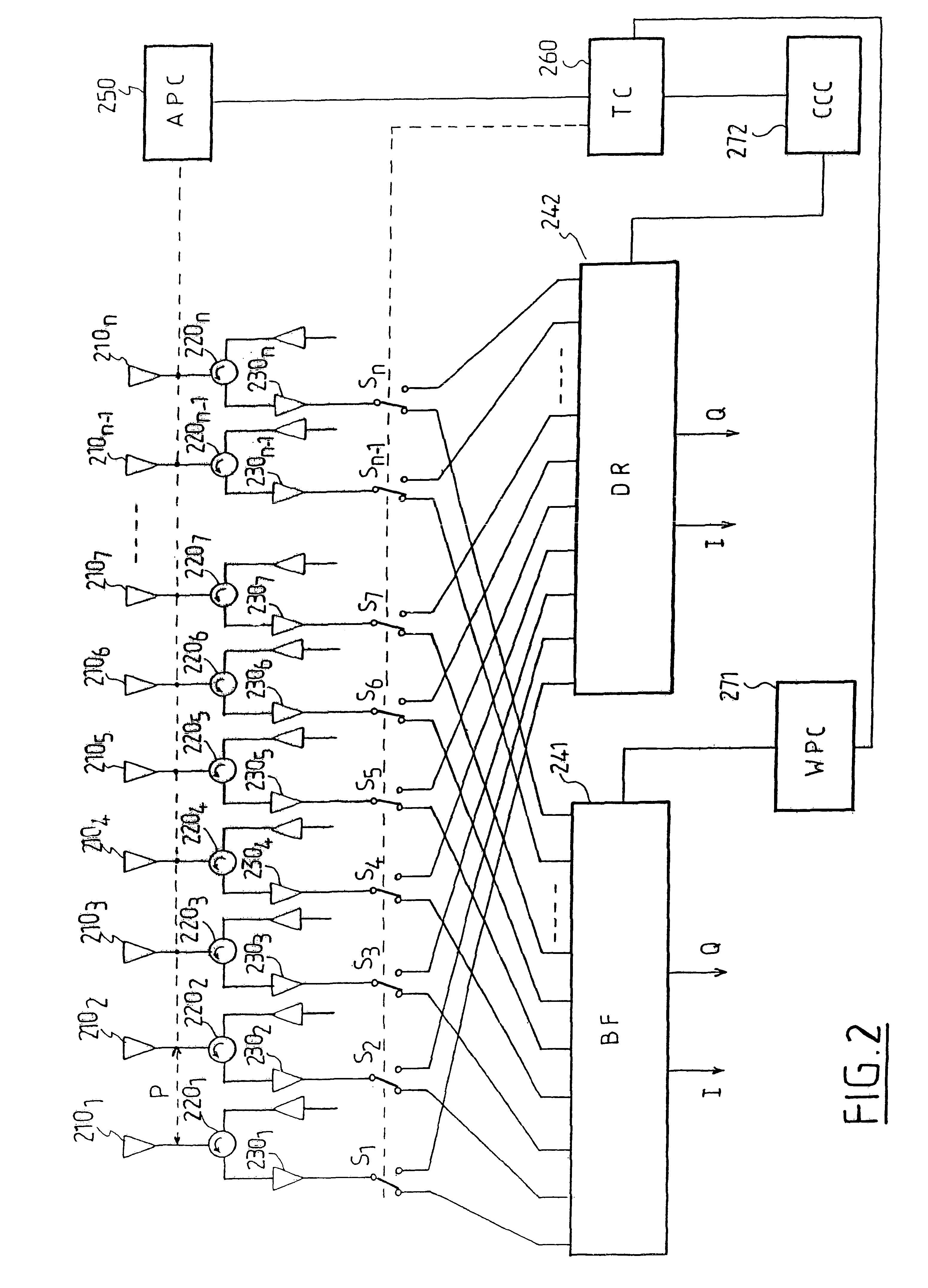Reconfigurable antenna device for a telecommunication station
a technology of telecommunication station and antenna device, which is applied in the direction of diversity/multi-antenna system, polarisation/directional diversity, individually energised antenna array, etc., can solve the problems of affecting the spatial selectivity of the system, affecting the system selection, and affecting the spatial selection of the system
- Summary
- Abstract
- Description
- Claims
- Application Information
AI Technical Summary
Benefits of technology
Problems solved by technology
Method used
Image
Examples
Embodiment Construction
is a simple case where the elementary antennae are grouped by packets with the same size q. The equivalent array pitch is then q*d, where d is the pitch of the basic array. The output signals of the elementary antennae all undergo the same weighting in the grouping units before being summed therein. Below the X-axis line there have been indicated the active grouping units in the form C.sub.z.sup.j where j is the index of the active unit 620.sub.j and z is a subset of (-k,-k+1, . . . ,0, . . ,k-1,k) of the connections adopted for the weighting, the others being multiplied by a zero coefficient or inhibited. Example B shows the design of an equivalent array with a pitch of the form (2p+1)d / 2 where p is an integer. The array is simulated by alternating the packets of p and p+1 elementary antennae. The difference in weighting level between the packets of p and p+1 elements is due to the standardisation according to the number of elementary antennae per packet. Finally, example C illustr...
PUM
 Login to View More
Login to View More Abstract
Description
Claims
Application Information
 Login to View More
Login to View More - R&D
- Intellectual Property
- Life Sciences
- Materials
- Tech Scout
- Unparalleled Data Quality
- Higher Quality Content
- 60% Fewer Hallucinations
Browse by: Latest US Patents, China's latest patents, Technical Efficacy Thesaurus, Application Domain, Technology Topic, Popular Technical Reports.
© 2025 PatSnap. All rights reserved.Legal|Privacy policy|Modern Slavery Act Transparency Statement|Sitemap|About US| Contact US: help@patsnap.com



